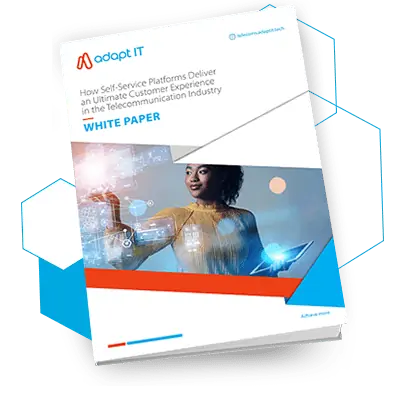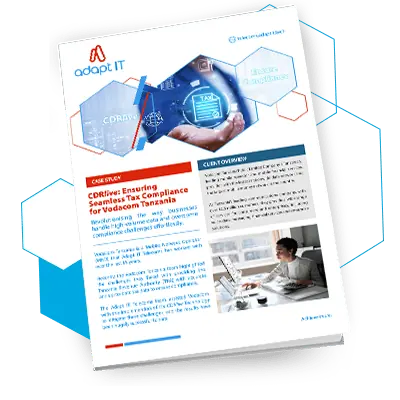Across the African continent, digital transformation is making significant inroads in transforming countries into digital economies. One of the main barriers challenging this evolution is the digital divide, which in simple terms, is the lack of access to digital technologies and a lack of understanding of how to utilise these digital technologies. With this digital divide significantly impacting economic inclusion and countries’ financial growth, other older technologies have been used to try and bridge the divide. One such technology is USSD. USSD has been a powerful tool for driving financial growth over the last few decades, with no end in sight. Let’s unpack what makes this technology an essential tool for financial inclusion across the continent.
Table of Contents
ToggleThe Digital Divide in Africa
To understand why USSD is being used across the continent for financial inclusion, it is essential to understand the digital divide and how this affects the individuals living within these countries.
In simple terms, the digital divide refers to the gap between individuals, communities or countries and their access and use of digital technologies, specifically mobile phones and connectivity to the internet. Several different factors have contributed to this divide. These include the following:
- Infrastructure – many African regions lack the necessary technological infrastructure, such as reliable electricity, internet connectivity, and telecommunication networks to ensure connectivity and access to mobile services.
- Economic disparities – the cost of digital devices like smartphones, computers, and tablets and the expense of internet subscriptions are often unaffordable for those in this region.
- Digital literacy barriers – inadequate education and digital literacy can hinder individuals’ ability to use digital technologies effectively. Without the necessary skills to navigate the digital landscape, people are less likely to benefit from or use digital services.
- Government policies and regulations – regulatory challenges, bureaucratic hurdles, and limited support for digital development across some countries can negatively impact the growth of digital infrastructure and services.
The number of mobile subscribers and internet connectivity also contribute to the divide. Let’s break down the numbers. According to GMSA’s Mobile Economy for Sub-Saharan Africa report, only 46% of the population subscribed to mobile services, with 49% of smartphone connections and 17% of 4G connections. From an internet connectivity point of view, connectivity vastly differs from region to region. For example, in Central Africa, 39% of the population lives outside a mobile broadband coverage area, while this figure is 16% for West Africa, 13% for East Africa and 12% for Southern Africa. Sub-Saharan Africa is the only region where mobile broadband coverage continues to outpace mobile usage. From the above, it is clear that more than half of the population in Africa is not connected and does not have access. Furthermore, around 57% of the population is unbanked.
The question remains, how are the individuals who do not have access to digital services, the internet and who are unbanked able to participate in the economy? The answer lies in utilising USSD as a tool for financial inclusion.

USSD: A Powerful Tool for Financial Inclusion
Overall, the digital divide goes hand in hand with economic isolation and leaves many individuals without access to vital services. As a solution to the challenge surrounding financial inclusion, USSD has been a technology utilised across the continent to allow unbanked customers and those without access to digital services to take advantage of several financial-based services. To understand how USSD has made this possible, it is important to unpack what USSD is and how it works.
USSD is an interactive, menu-based technology that facilitates real-time interaction. A USSD message can be up to 182 characters long and is often confused with SMS technology as both are used to send short text-based messages. Unlike SMS messages, USSD messages create a real-time connection during a USSD session. The connection remains open, allowing a two-way exchange between the subscriber and mobile operator. USSD technology is also more responsive than SMS.
USSD has become an essential tool across Africa because this technology is easy to use, does not require sophisticated technology, and is cheaper than most communication platforms. USSD also has the following benefits:
- Accessibility and reach for underserved populations – USSD is available on all mobile phones, including basic feature phones. It does not require the internet, which means it is accessible to all mobile devices. This accessibility ensures that a broader population can access financial services easily, including those in remote or underserved areas.
- Simplicity and ease of use for customers – USSD transactions are straightforward and easy to understand, even for individuals with limited technological or digital literacy. Users can navigate menus and perform transactions by entering simple codes, which eliminates the need for complex procedures and ensures ease of use.
- Cost-effectiveness and compatibility with feature phones – USSD is a cost-effective option for providing financial services as it doesn’t require expensive data plans or smartphones. This makes it an ideal choice for individuals in regions where smartphone penetration is lower, and data costs are prohibitive. USSD also works across various mobile networks and devices, ensuring compatibility and interoperability. This makes it easier for financial institutions to offer services to a broader customer base.
- Enhanced security and trust for users – USSD transactions are typically secured through PINs or passwords, reducing the risk of fraud and unauthorised access. This security feature helps build trust among users, making them more likely to use mobile financial services.
These benefits showcase why USSD is such a prevalent protocol within the region. You may be thinking, is USSD really being utilised on such a large scale across the continent? The answer is yes. So much so that 9 out of 10 transactions are taking place through USSD, which translates to 94% of all digital financial transactions across Africa utilising this technology. From these statistics, it is clear that USSD has become a critical infrastructure for many financial systems across the continent.
The power of this particular technology is based on its ability to be used across all mobile phone devices and networks. This powerful technology is fully inclusive and can bridge the digital divide, especially where financial services and mobile money are concerned. Let’s take a look at some of the popular USSD technologies within the region and how they have contributed to financial inclusion and growth.
Case Studies: How USSD Has Transformed African Economies
Across the continent, there have been several USSD-based financial service solutions implemented, which have focused on providing financial services to the large populations who are unbanked and who do not have access to digital services. Three of the most popular solutions include:
1. M-Pesa: Revolutionising mobile banking in Kenya East Africa
M-Pesa, one of Africa’s largest mobile money services, has been a critical case study within the FinTech sector. This solution is a mobile phone-based money transfer, payment, and micro-financing service launched and run by Vodafone and Kenyan telecommunications provider Safaricom. Since its inception, this service has been called the most successful implementation of a Mobile Money solution. In just over a year, M-Pesa had 2.7 million mobile money users. Over the last 16 years, M-Pesa has seen a steady increase in customers and has reached 26 billion transactions in the financial year ending 31 March 2023.
Why has M-Pesa been so successful in the African market? The answer is that these services opened up a world of opportunity for the many unbanked customers across the African continent and provided access to financial services. This offered financial inclusion and turned a customer’s mobile phone into a powerful financial tool that could be used to make payments and transfer funds, all while using simple USSD technology that is highly accessible. M-Pesa reduced the need for banks and ATMs by providing millions with a gateway to financial services through a simple mechanism using their mobile phones.
2. EcoCash: Empowering financial transactions in Zimbabwe
EcoCash is an innovative mobile payment solution for Econet customers. It allows customers to perform simple financial transactions, like sending money, buying prepaid airtime or data for themselves or other Econet subscribers, and paying for goods and services using their mobile phones.
With 4.3 million mobile money users and 81% of Zimbabwe’s informal sector relying on mobile money, USSD technology like EcoCash has become essential for SMEs and customers. According to a recent Finmark report, this technology is being utilised for airtime purchases, payments for goods and services, and receiving and sending money. EcoCash empowers financial transactions by allowing customers to:
- Transfer (send) money across all networks
- Pay for goods and services locally and internationally
- Pay bills such as school fees, Council utility bills (water, rates), DSTV, etc
- Withdraw money (Cash-Out)
- Buy Econet prepaid airtime, text, and data bundles or pay a directly connect account for yourself and other Econet subscribers
- Make secure online payments
- Receive money from the diaspora
- Deposit money (Cash-In)
- Save money
- Access loans
3. Orange Money: Driving financial inclusion in Côte d’Ivoire
Since its launch in 2008 in Côte d’Ivoire, 80 million customers in 17 countries rely on Orange Money to access simple, secure financial services. Over 49 million customers use Orange Money in the Ivory Coast to complete financial transactions quickly and securely on their mobile phones.
Orange Money was introduced in Ivory Coast to provide financial services to the large unbanked population in the country. Since its launch, Orange Money has grown in popularity in Ivory Coast and has become essential to the country’s financial infrastructure.
It has helped to increase financial inclusion in the country and has provided a convenient and secure way for people to conduct financial transactions in addition to traditional financial services. Similarly, Orange Money also offers insurance and other financial products.
Utilising the right USSD technology to facilitate financial inclusion across Africa
USSD technology is undoubtedly a powerful tool for financial inclusion in Africa. For this technology to be effective, it is critical to have the right software in place that allows a financial institution to create financial services utilising USSD. With over three decades of experience within this sector, Adapt IT Telecoms has developed an innovative USSD Gateway solution.
This versatile platform can be used for mobile banking, recharging services, marketing campaigns, competitions and more. This scalable and customisable technology allows you to deliver targeted services and engage with your customer base seamlessly. This menu-driven solution is compatible with most handsets, and the innovative platform can be accessed anywhere, at any time and on any mobile device. Armed with this solution, you can provide your customers across Africa with financial services that offer financial inclusion and drive economic growth.
Conclusion
The digital divide has created several challenges for individuals across Africa, especially where access to financial services is concerned. USSD has become the technology of choice to provide these financial services as it provides access to these services. USSD ensures that unbanked individuals and those without access to digital services can access financial services and actively participate in the economy, which fosters financial inclusion. With so many benefits associated with using USSD, it is clear why there is such a reliance on this technology. If you are a financial service provider wanting to utilise USSD to its full potential and enhance financial inclusion across the continent, contact Adapt IT Telecoms today and learn more about our innovative USSD Gateway solution.

Discover why 3.5 billion people around the world still use USSD
In this whitepaper we explore the current communication landscape, the significance of USSD and what the future holds for technology in Africa, Emerging and First World Markets.

Experienced in the Telecoms & IT industries, encompassing services and solutions from the traditional to the evolved digital communication networks, embracing profound knowledge and proficiency in both the technical and sales disciplines. Product Management, including construct, software lifecycle, roadmap strategy and market leadership of Adapt IT’s portfolio of Next Gen Value Added Services (NG-VAS) solution stream.




